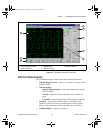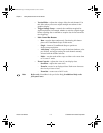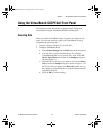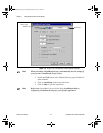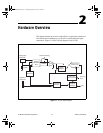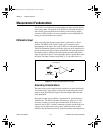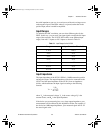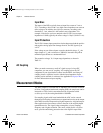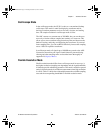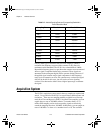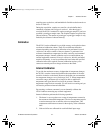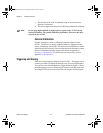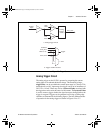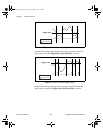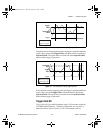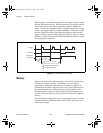
Chapter 2 Hardware Overview
©
National Instruments Corporation 2-5 NI 5911 User Manual
Oscilloscope Mode
In the oscilloscope mode, the NI 5911 works as a conventional desktop
oscilloscope. This mode is useful for displaying waveforms and for
deriving waveform parameters such as slew rate, rise time, and settling
time. The sample resolution in oscilloscope mode is 8 bits.
The ADC converts at a constant rate of 100 MS/s, but you can choose to
store only a fraction of these samples into memory at a lower rate. This
allows you to store waveforms using fewer data points and decreases the
burden of storing, analyzing, and displaying the waveforms. If you need
faster sampling rates, you can use RIS to effectively increase the sampling
rate to 1 GS/s for repetitive waveforms.
In oscilloscope mode, all signals up to 100 MHz are passed to the ADC.
You need to ensure that your signal is band-limited to prevent aliasing.
Aliasing and other sampling terms are described more thoroughly in
Appendix B, Digitizer Basics.
Flexible Resolution Mode
Flexible resolution mode differs from oscilloscope mode in two ways: it
has higher resolution (sampling rate dependent) and the signal bandwidth
is limited to provide antialiasing protection. This mode is useful for spectral
analysis, distortion analysis and other measurements where high resolution
is crucial. Table 2-2 shows the relationship between the available sampling
rates and the corresponding bandwidth for flexible resolution mode.
CBIHWum.book Page 5 Thursday, October 29, 1998 1:56 PM



